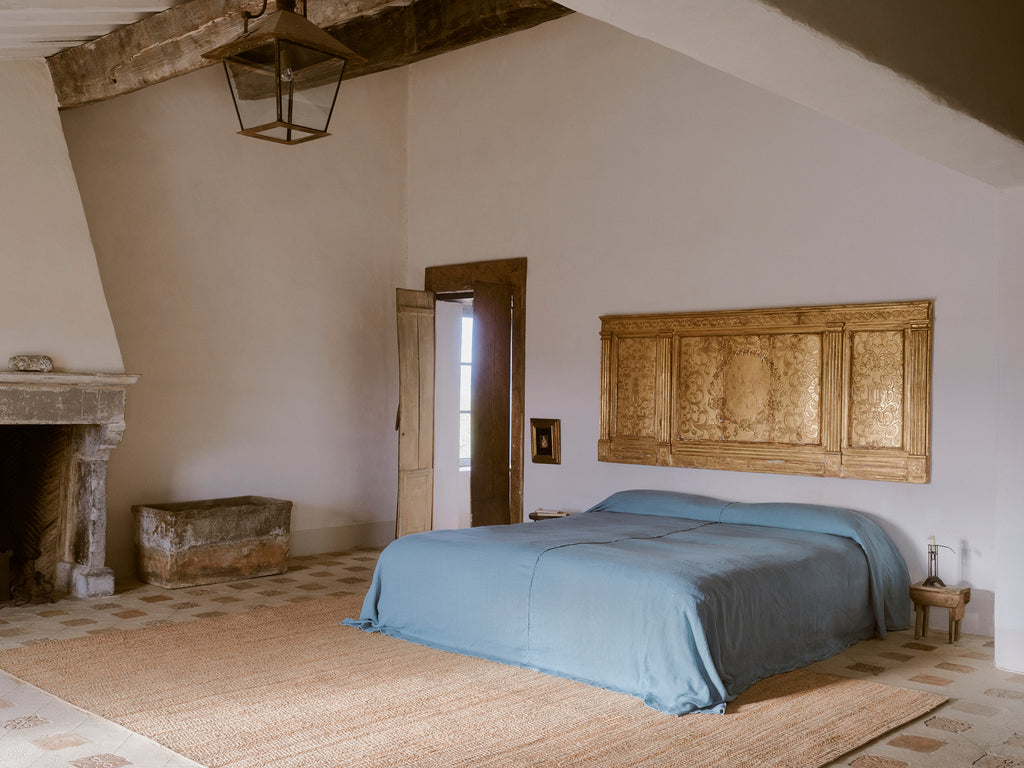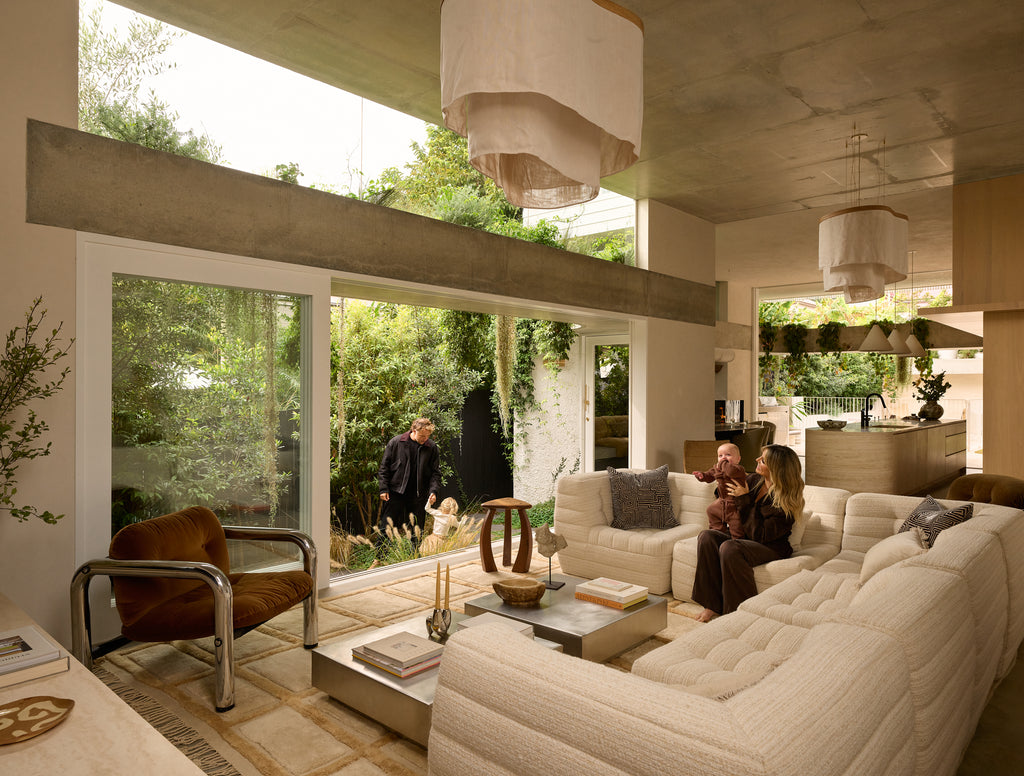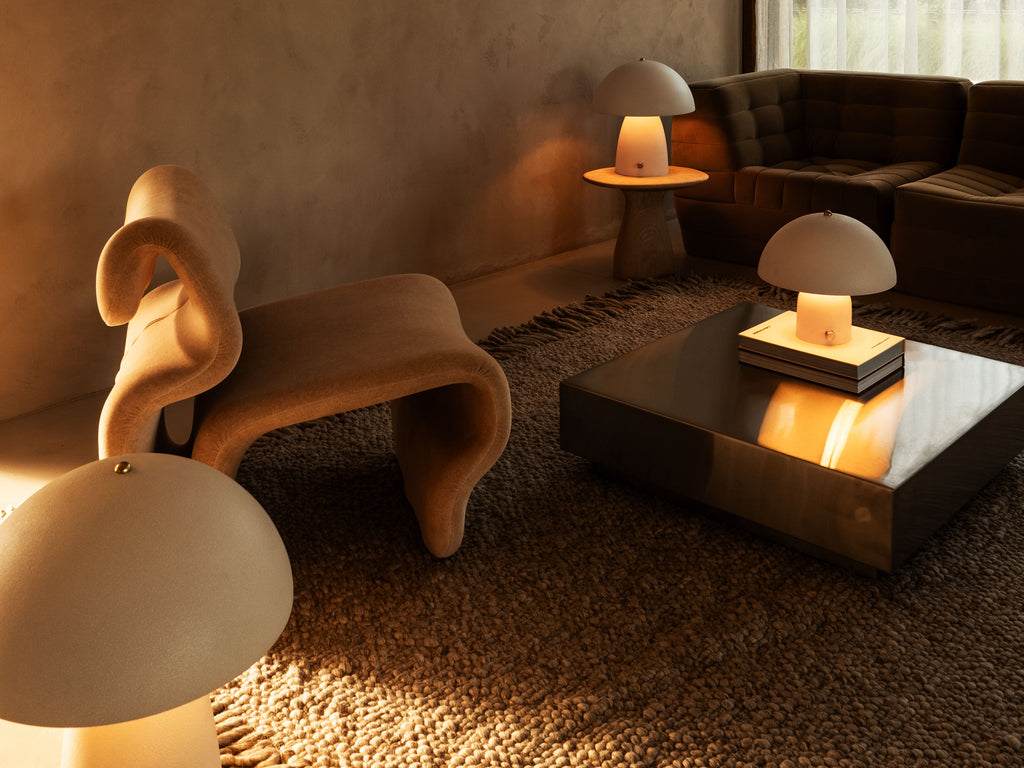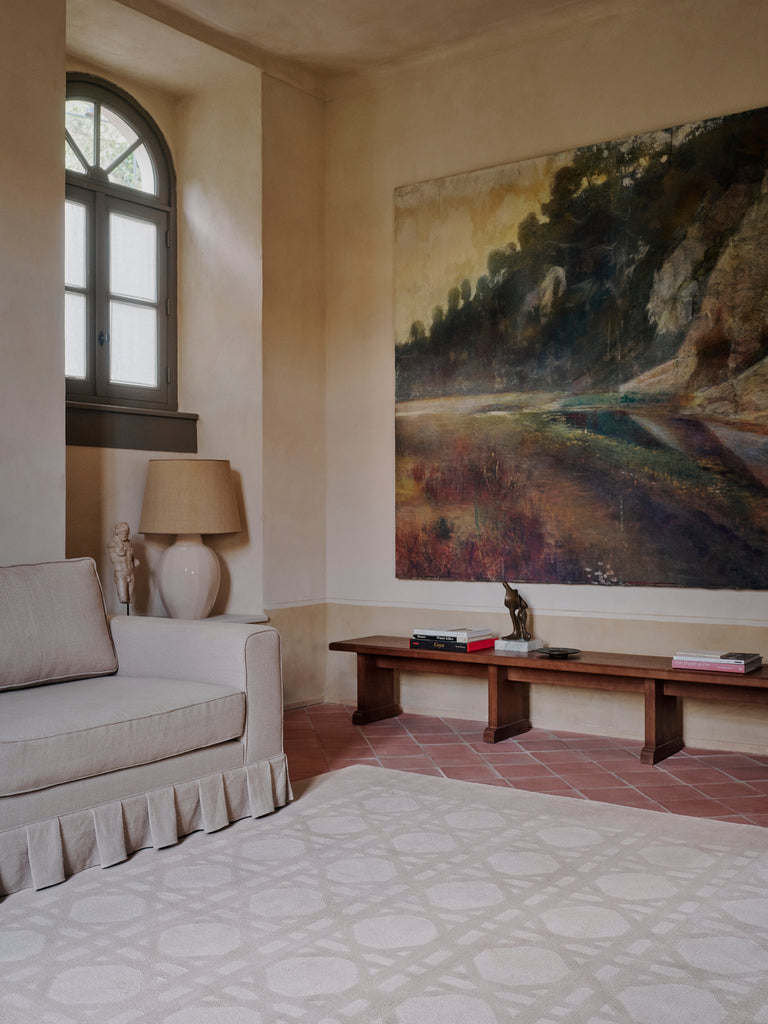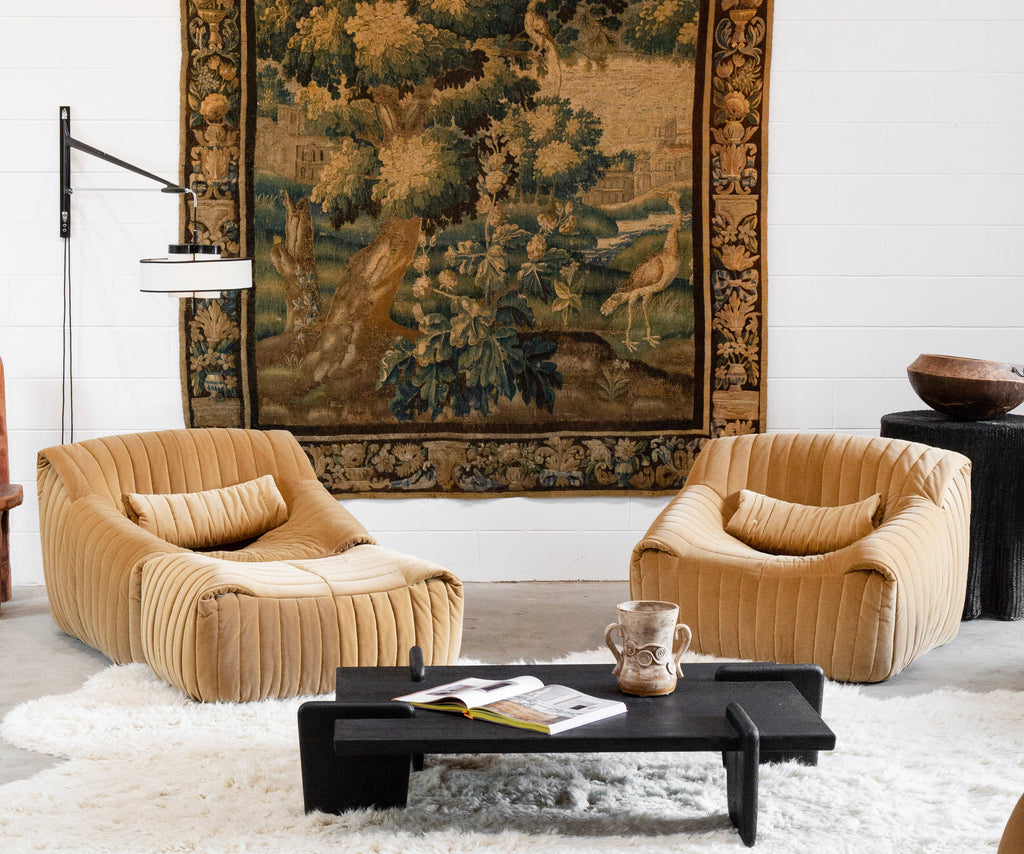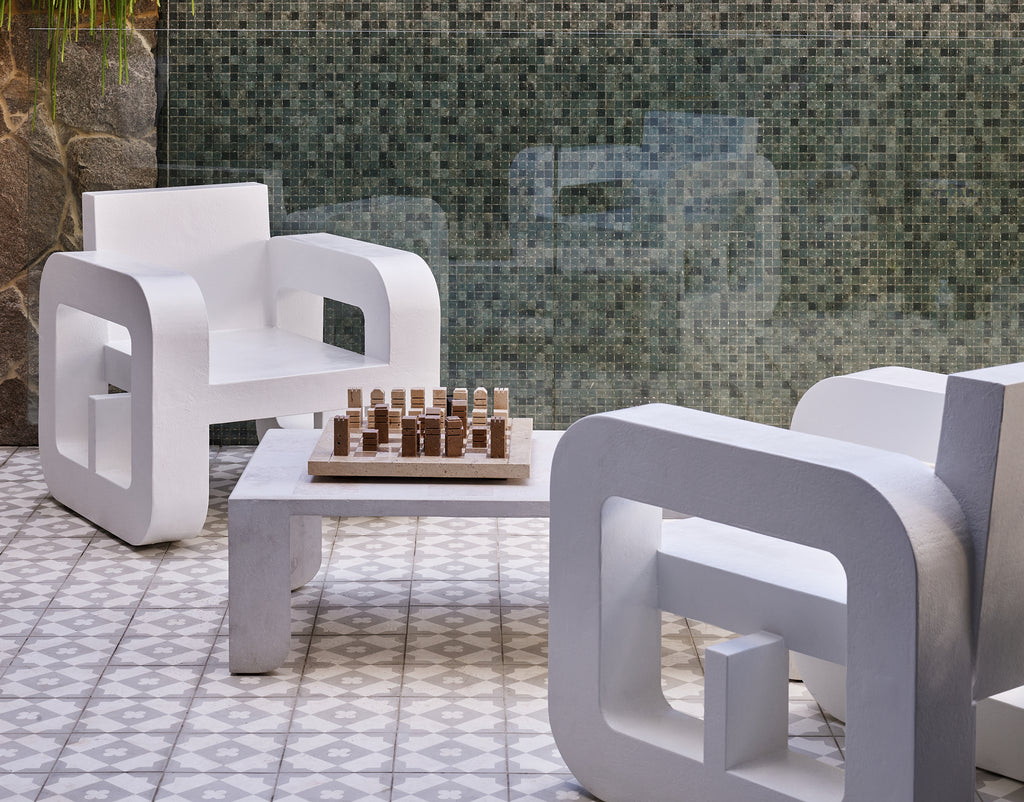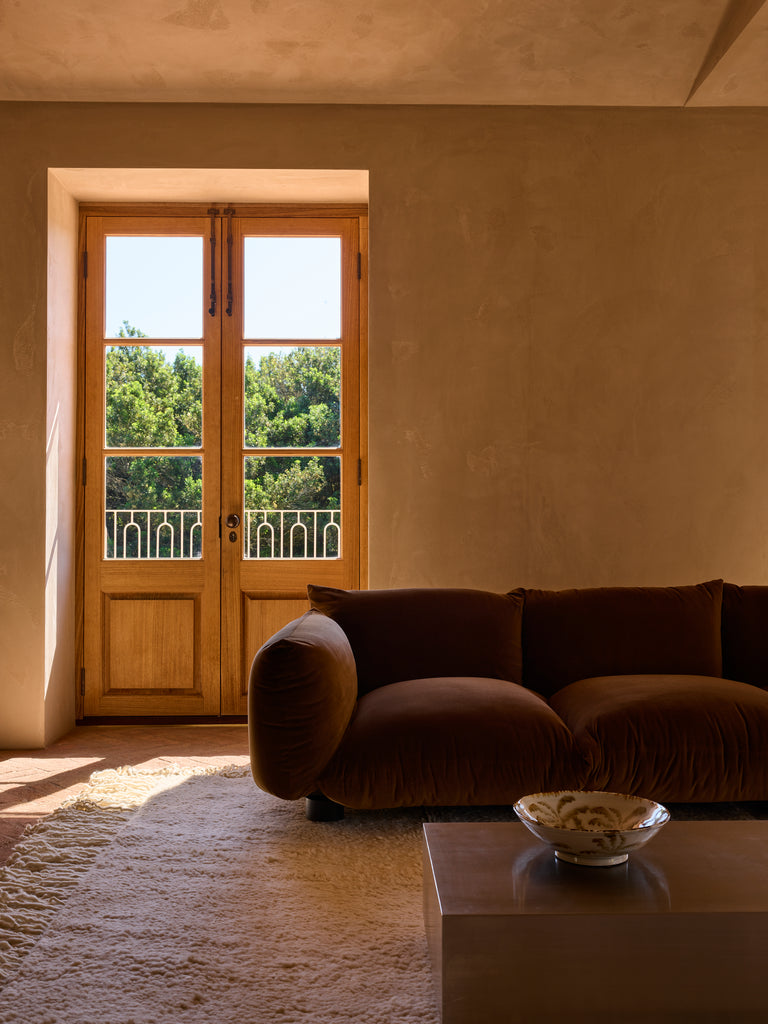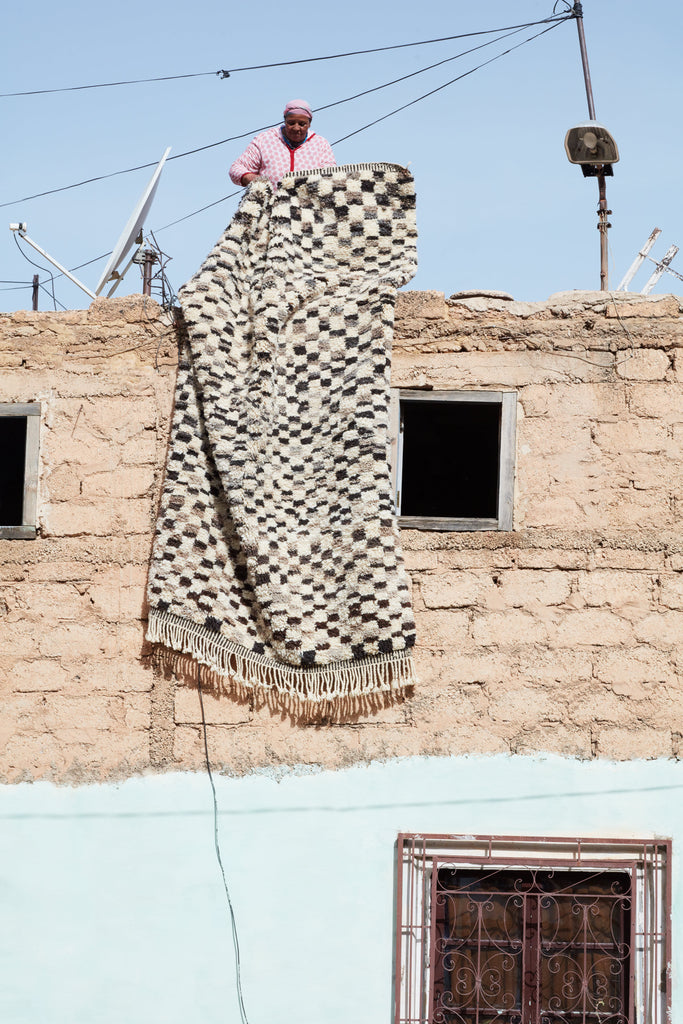
DESIGN FOCUS
Rug Story | Behind the Beni
While there are a flood of imitations and copies of the traditional ‘Berber’ rug - nothing beats the subtle details and layered history that are imbedded in genuine pieces sourced from their native Moroccan regions. We are always on the hunt to collect the best and most soulful pieces we can possibly find, from some of the most remote areas of Morocco to bring them into your homes.
After landing in Marrakech we begin following the west coast of Morocco from Sati through to Casablanca. Once we reach Rabat, we head inland along River Sebou towards the Middle Atlas Mountains to stop in Fez - where the search really begins. It’s the area between Khenifra and Taza where you will find the many variations of carpets that begin with Beni – such as the Beni Ourain, Beni M’Rirt and Beni M’Guild. Beni is an Arabic word that translates to ‘son of’ or people/tribe/kin, and the close proximity to which these tribes live means that their carpets are somewhat similar with subtle differences in design elements and colour. A big factor when it comes to the quality of these rugs is the superior organic wool produced by the sheep in this region. While we are able find these carpets in the souks of Marrakech, the really special pieces are hidden in the Middle Atlas Mountains from where they originate.
Carpets of Morocco Map
Beni Ourain
Perhaps the most well-known of all Moroccan rugs, the Beni Ourain, originates from the area sitting between Fez, Marmoucha and Taza in the lower Middle Atlas Mountains. This style of rug is distinguished by sparse minimalistic patterns and the lozenge (or diamond) motif, as well as the use of natural cream or ivory wool with black/brown pattern. The design is incredibly inviting as a surface for sleeping – the result of centuries of adaptation to life at 2000m. In modern times, the plush Berber rugs were often used by the likes of Alvar Aalto, Le Corbusier and Frank Lloyd Wright who recognised the beauty, texture and soul that the simple, nomadic Berber rugs gave to the clean lines of modernist design.


Beni M’Rirt
Beni M’Rirt carpets are known for their darker, bolder colours. Woven by the Beni M’Rirt tribes of Morocco, earlier versions feature only variegated colour without any pattern, while more recent incarnations are influenced by Beni Ourain rugs with the addition of the lozenge. As the M’Rirt tribes are situated higher up the Middle Atlas Mountains, they tend to be more densely woven with a shorter pile than the Beni Ourain. The contemporary pieces are hand woven using traditional techniques, on looms which have increased in size to make larger carpets that accommodate modern open plan living.


Vintage Beni M'Rirt rugs using colour as design. Left: 'Sandy' has a pattern feature woven through that was added to the piece in modern times. Right: 'Zandoli' in bold saffron is a very rare vintage carpet from this region.


Contemporary Beni M'Rirt carpets are a fusion of Beni Ourain with the use of the classic Berber lozenge pattern in distintive darker, bold colours.
Beni M’Guild
Like most Berber rugs, only the women weave among the Beni M’Guild tribe. This Berber tribe create very special carpets, often using brown, aubergine, blue, deep mauve and dark tangerine. The colours were once produced with dye from madder root and sorrel, or green grapes. We have only ever found vintage pieces from the tribe – both flatweaves with detailed Berber patterns, as well as richly coloured carpets with medium to deep piles. This region in the so-called Atlas plateau, with its limestone quarries and volcanic soil, receives the highest annual rainfall in Morocco. It is said to be one of the most important producers of Moroccan flatweaves.


